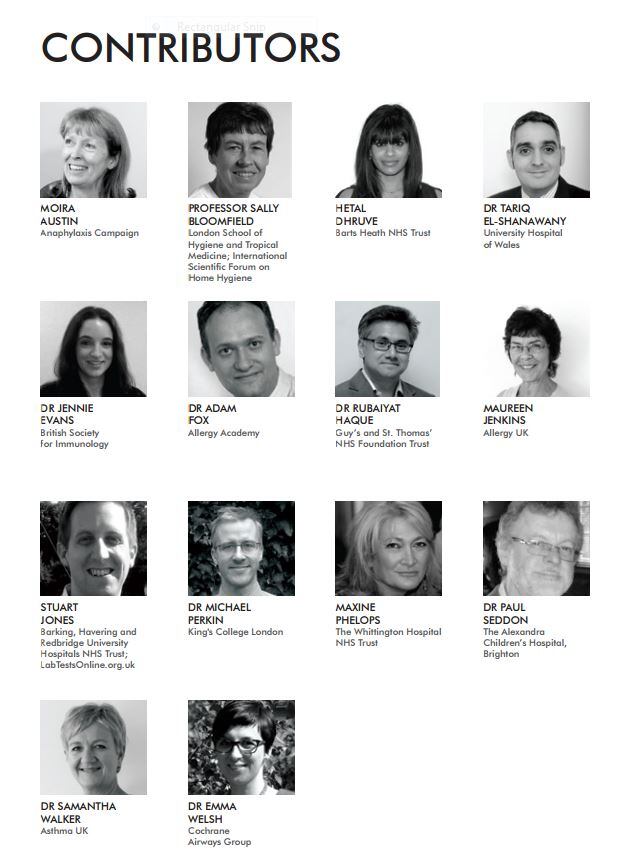The ‘Making Sense of Allergies’ report is from Sense About Science, an NGO self-tasked with busting myths around science. Misreporting of and misconceptions about allergies held big public health implications, it said.
“Fears about food allergies are leading parents to cut major food groups from their children’s menus and causing people to follow unnecessarily restrictive diets. It may seem surprising in advanced societies but these are leading to cases of malnutrition, which is particularly risky for children,” the report said.
Maureen Jenkins, clinical director for Allergy UK and one of the authors of the report, told us malnutrition could occur when people avoided foods for presumed allergies, without professional diagnosis and dietary advice.
The report claimed allergies had become “a catch-all diagnosis for unexplained symptoms” and highlighted possible inaccuracy of home kit allergy testing.
A study of 969 children on the UK’s Isle of Wight found 34% of parents reported food allergies in their children but only 5% were found to actually have an allergy. It said doctors were also over diagnosing because of reliance on or misinterpretation of limited tests.
Contributors to the report included various experts from universities, charities and health services.
Cut it out

However, on free-from diets Jenkins added: “Nobody with a food allergy or allergies needs to be malnourished as there are always other safe foods that can supply equivalent nutritional components.”
Concerns over the nutritional composition of free-from products like gluten-free have seen R&D movements towards things like pulses and ‘ancient’ grains.
According to Mintel data, gluten-free claims were seen on almost 10% of food and drink launches globally in 2013, up from 6% back in 2009.
“One of the most frequent subjects in newspapers, magazines and online forums.”
There are 100 million allergy-related Google searches a year. On just one parent internet forum there were over 10,000 posts about allergy.
The Anaphylaxis Campaign receives 20,000 enquiries a year, mostly on food allergy. In the past year, the Allergy UK website received 2.6 million visits.
Double damage
As well as encouraging over diagnosis, misunderstanding of allergies had meant severe diagnosed conditions could be trivialised.
In an anecdotal blog post on the report, Sense About Science managing director Tracey Brown described an incidence when the severe egg allergy of her son had not been taken seriously at school since the teachers had “become confused by parents who said their allergic children were ‘okay with a small amount’” and listed things like sweets as parent-reported allergies.
“The rise in allergies has prompted some people to become dismissive. However, allergies are an overreaction of the immune system which can have serious consequences if an allergic person is exposed to the allergen or if they don’t take their medication,” the report said.
The report sought to draw a line between the concept of a food intolerance – whereby a small amount of the food could be eaten – and a food allergy that involved the immune system and resulted in often much more violent reactions like stomach cramps, vomiting and diarrhoea as well as bloating and fatigue, or even anaphylaxis in extreme cases.
Dr Tariq El-Shanawany, a consultant clinical immunologist at the University Hospital of Wales, said: “The distinction between allergies and intolerance is important because it changes the advice given. Unfortunately food allergies and intolerances are often confused, which can result in risky behaviour if you have a severe allergy, and needlessly strict avoidance if you have an intolerance.”
Coeliac disease – an autoimmune disease where the body attacks its own cells – was also often confused with wheat allergy and gluten intolerance. According to a 2010 paper, about 1% of adults and children have the disease in Europe. The amount of people buying gluten-free foods however goes well beyond this.
